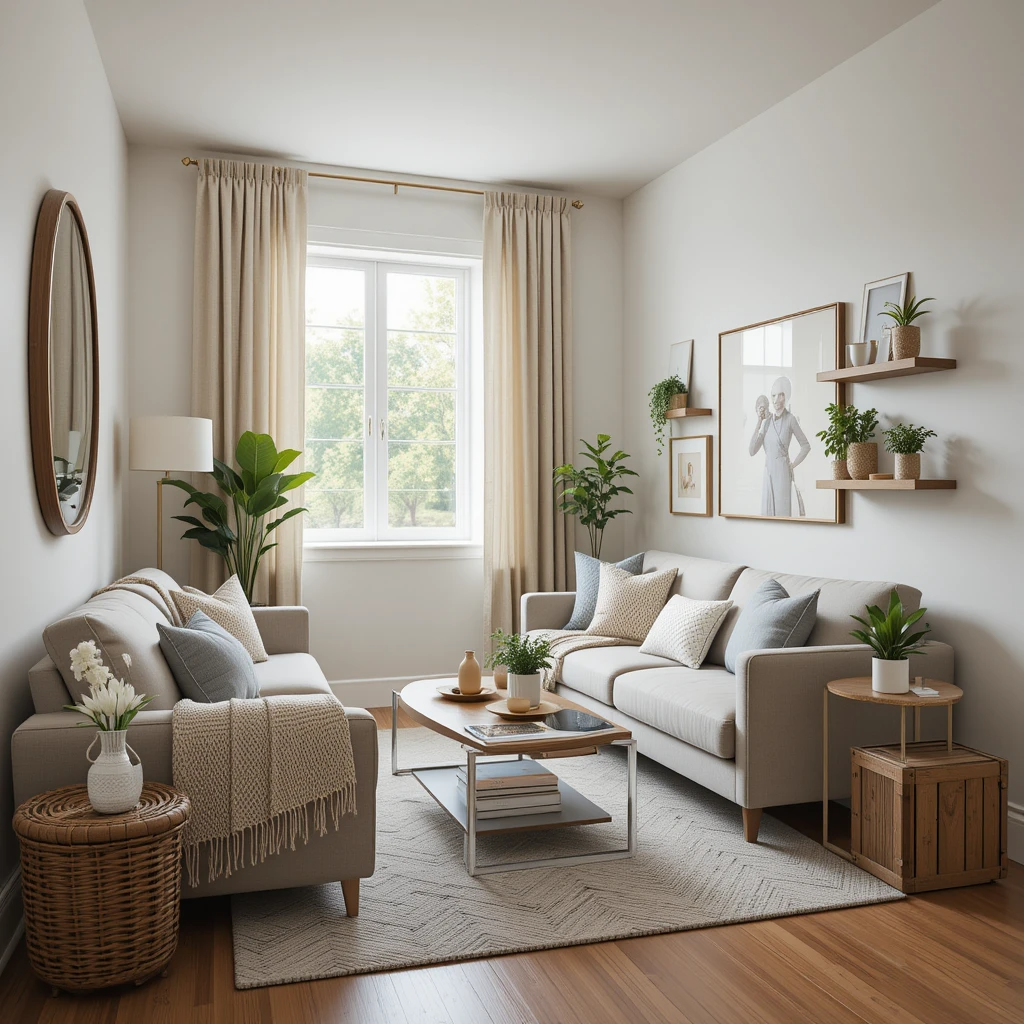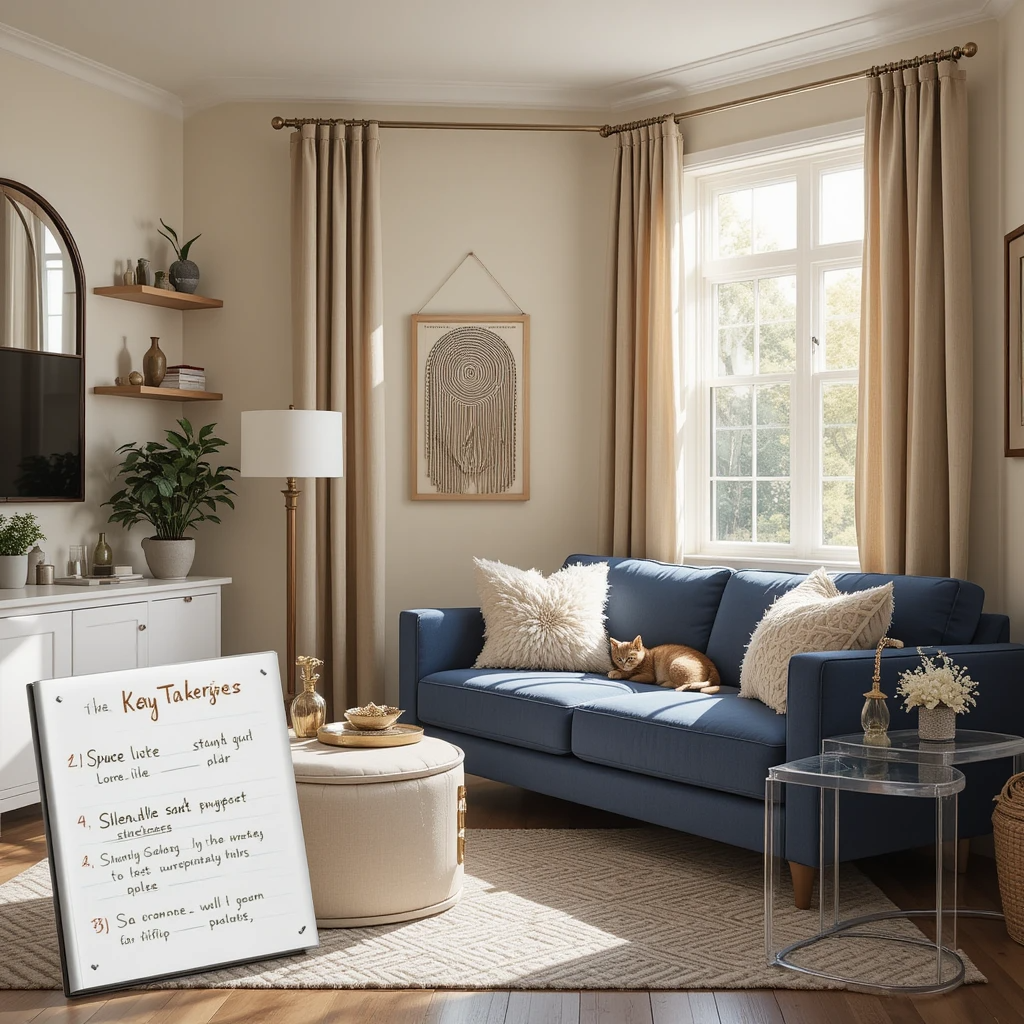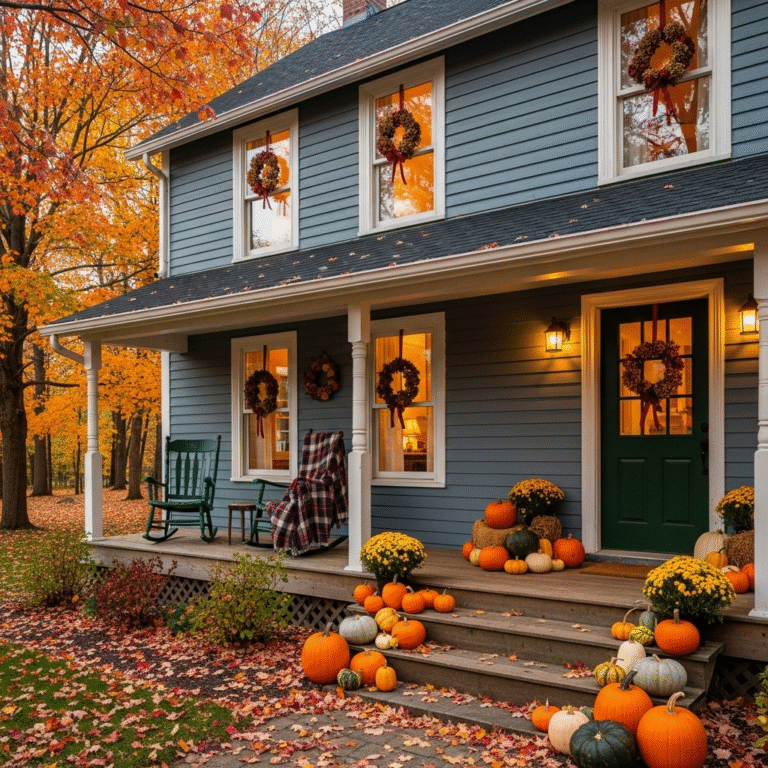How to Decorate a Small Living Room on a Budget (2025 Guide)

To decorate a small living room on a budget can feel like a puzzle—how do you maximize style, comfort, and functionality without breaking the bank? The good news is that with smart planning, thrifty shopping, and a few design tricks, you can create a space that feels open, inviting, and totally *you*.
In this 2025 guide, we’ll cover:
✔ The latest small-space decor trends (and what’s replacing outdated styles)
✔ Budget-friendly decorating hacks (including the *2/3 rule* for perfect proportions)
✔ How to make a tiny room feel bigger (optical illusions & multi-functional furniture)
✔ Where to splurge vs. save for maximum impact

1. What Trend is Replacing Traditional Small Living Room Decor in 2025?
Gone are the days of bulky sectionals and matchy-matchy furniture sets.
In 2025, small-space decor is all about flexible minimalism—think:
Modular & Multi-Functional Furniture (e.g., sofa beds, nesting tables, fold-down desks
that morph to fit your needs (like this space-saving convertible sofa).
“Quiet Luxury” Textures (linen, bouclé, and warm woods instead of loud prints)
AI-Assisted Layouts (apps like Room Planner help optimize awkward spaces)
Sustainable & Secondhand Finds (thrifting is in, fast furniture is out)
Replacing: Overstuffed furniture, all-gray color schemes, and cluttered gallery walls.
Pro Tip: Mix styles for personality—try blending modern and rustic with these [Affordable Modern Farmhouse Decor Ideas] for cozy contrast.

2. What Decor is In for a 2025 Living Room?
This year’s trends prioritize light, airy, and adaptable spaces. Try these:
Color Palettes
–Earth Tones (warm beiges, soft clays, muted greens)
Monochromatic Layers (cream-on-cream with texture contrast)
Pops of “Neo Mint” (2025’s freshest pastel accent)
Furniture Picks
Low-Profile Sofas (legless designs visually expand floorspace)
Glass or Acrylic Pieces (see-through coffee tables = instant openness)
Wall-Mounted Shelves (free up floor real estate)
Textures & Accessories
Curved Shapes (round mirrors, oval rugs—soft edges feel more inviting)
Woven & Faux Fur (for tactile coziness without bulk)
Smart Lighting (LED strips, plug-in sconces for adjustable ambiance).

3. What is the 2/3 Rule for Living Rooms?
How to Apply the 2/3 Rule in Your Space
A pro designer trick! The 2/3 rule ensures balance:
Furniture should fill ~⅔ of the room (leave ⅓ empty for flow).
Scale pieces to ⅔ of wall height (e.g., a bookshelf at 5’ tall for an 8’ ceiling).
Anchor rugs under the front ⅔ of seating (ties the space together).
Example: In a 10’x12’ room, a 6’ sofa + 2’ side table = 8’ total (⅔ of 12’).

4. How to Decorate a Small Living Room on a Low Budget
Budget Breakdown (Under $500 Total!)
| Category | Splurge ($) | Save ($) |
|————–|————|———-|
| Seating | $300 (sofa) | $50 (thrifted armchair) |
| Storage | $0 (repurpose crates) | $30 (floating shelves) |
| Lighting | $25 (plug-in pendant) | $10 (DIY lamp) |
| Decor | $20 (large mirror) | $5 (secondhand frames) |
Thrifty Tricks
Paint Small + Bold (dark accent walls recede, making rooms feel larger).
DIY Floating Shelves (use $10 brackets + stained wood planks).
Swap Hardware (new knobs on old cabinets = instant upgrade).
Rug Layering (place a small vintage rug over jute for dimension).
Thrift Art (frame fabric scraps or book pages for free “art”).
Use Mirrors Strategically (opposite windows to double light).
Greenery Hack (propagate pothos vines in recycled jars).

5. How to Decorate a Very Tiny Room
Space-Saving Must-Haves
Murphy Desk (folds flat against the wall)
Ottoman Storage (hide blankets + serve as seating)
Tiered Side Tables (vertical storage for remotes/books)
Optical Illusions
✅ Striped Rugs (run stripes lengthwise to elongate).
✅ Floor-to-Ceiling Curtains (fake taller windows).
✅ Clear Furniture (acrylic chairs “disappear” visually).
Tiny Room Layout Template
(For a 8’x10’ space)
Anchor a 5’ sofa against the longest wall.
Float a narrow console table behind it.
Place a round 3’ rug centered under the sofa.
Add 1 armchair (no arms = smaller footprint).
Mount a TV or large mirror opposite the sofa.

Final Tip: Splurge vs. Save
Worth the Money:
A quality sofa (used daily—aim for sturdy frames).
Blackout curtains (better sleep = priceless).
Budget-Friendly Alternatives
Expensive decor (swap for thrifted/DIY).
Trendy paint colors (neutrals last longer).
Key Takeaways
–2025’s trends favor flexible, sustainable, and textured spaces.
The 2/3 rule keeps small rooms balanced.
Budget magic = thrifting, DIY, and strategic mirrors.
Tiny rooms shine with clear furniture and vertical storage.
Ready to transform your space? Start with one corner and build gradually. Happy decorating!
adds a postscript note. For more rustic inspo, check out these Affordable Modern Farmhouse Decor Ideas to mix into your small-space scheme!








Этот текст на английском языке.
I really like the idea of making homes cozy—it’s such a warm and inviting concept! The Amazon Associates Program seems like a smart way to support the site while offering useful recommendations. I’m curious, though, how do you choose the products you link to? Are they tested or reviewed by your team? I’d love to know more about the process behind it. Also, do you have any personal favorites that you’ve found through this program? I think it’s great to see a site focused on creating comfortable spaces—it’s something we all need more of. What’s your ultimate tip for making a home feel cozy?
I really appreciate how MakeHomesCozy.com is leveraging the Amazon Associates Program to create a sustainable income stream. It’s a smart way to monetize their platform while offering valuable content to their audience. I’m curious, though, how do they ensure the recommendations they provide are genuinely helpful and not just driven by affiliate incentives? It’s great to see a focus on making homes cozy, but I wonder if they also include tips for eco-friendly or budget-friendly solutions. Do they have a community or forum where users can share their own cozy home hacks? I’d love to hear more about their process for selecting products to feature. What’s your take on balancing affiliate marketing with authentic, user-focused content?